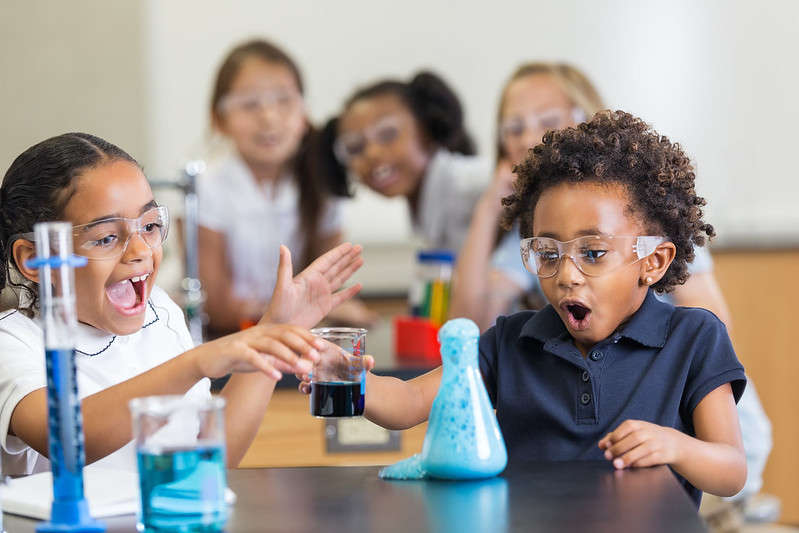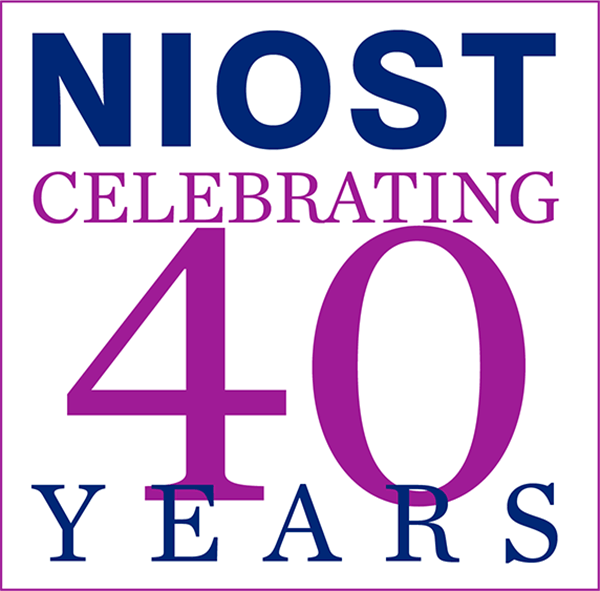Exploring Girls' Engagement in STEM Activities
January 19, 2021
 By Kathryn A. Wheeler, NIOST Research Associate
By Kathryn A. Wheeler, NIOST Research Associate
There are at least three reasons why it’s important to encourage youth in STEM (science, technology, engineering, and math): (1) we need more young people pursuing STEM careers to meet the workforce demand; (2) whether or not someone chooses a career in STEM, they need to be science literate in today’s society so they can make informed decisions about issues like health care, food, the environment, and technology; and (3) STEM activities are fun and engaging!
But some groups, such as girls, youth of color, and youth from rural areas often find themselves marginalized and underrepresented in STEM learning opportunities and career pathways. GEMS (Girls Excelling in Math and Science) is a program designed to counteract these trends.
GEMS was founded by a former teacher when her daughter shied away from advanced math classes because they were “hard.” GEMS is now an international network of hands-on, activity-based, out-of-school time clubs focused on increasing girls’ curiosity, interest, and persistence in STEM. It is designed especially, but not exclusively, for rural girls.
The National Institute on Out-of-School Time (NIOST) recently completed a research study of two GEMS clubs in the Venango County area of Pennsylvania. GEMS hosts 16 clubs in Venango County through afterschool, library, and summer programs, and serves more than 250 girls in grades 2-12. The study included program observation and analysis. There were three research questions related to STEM engagement that guided club observations:
- What types of science behaviors did girls engage in most frequently?
- How actively involved were girls in the STEM activities?
- What was the affect of girls while doing the STEM activities?
This research was grounded in the Science Learning Activation Framework which posits that youth who have positive early STEM experiences will be more likely to show growth in STEM interest and curiosity, valuing of science as useful, confidence in their ability to do STEM, and desire for more STEM experiences (Dorph, Schunn & Crowley, 2017).
What We Learned
NIOST director and senior research scientist Georgia Hall, Ph.D., research associate Kathryn A. Wheeler, Ed.D., and student intern Jenn Yu, ‘22, presented their findings virtually to GEMS educators and program providers in December 2020. Researchers found that:
- GEMS girls were actively involved in STEM projects in a hands-on way.
- In club activities, girls engaged in a wide range of science behaviors such as exploring, experimenting, observing, discussing, using tools, and asking questions.
- Girls enjoyed the process of creating, innovating, and solving challenges. They were frequently amazed and joyful about what they were discovering.
- At no time were girls observed to be feeling frustrated, upset, or distressed when they encountered a challenge.
- Girls were activated by the challenges they confronted and eager to try to solve them and to connect with each other for help when needed.
- Girls were persistent in their activities and faced challenges by working together.
Implications for Effective Practices
These findings help us to think about strategies for keeping STEM learning strong for rural girls and others during their early experiences in informal STEM learning. Some recommendations:
- Keep girls absorbed in STEM activities by ensuring that the activities are hands-on and truly challenging. If they are too easy, engagement and learnings may decrease.
- Engage girls directly in the scientific process of identifying a problem, researching it, hypothesizing, experimenting, collecting data, analyzing data, drawing conclusions, and then trying again. Explicitly name this process as “science.”
- Aim to get girls thinking beyond just following set procedures to produce a product or outcome. Try to design activities that encourage creativity so girls can explore, invent, and gain a deeper understanding of science concepts.
- Encourage girls to work together. If girls have questions, for example, instruct them to talk to each other to share resources and ideas before asking adults to help. This process will help foster confidence, collaboration, innovation, and persistence.
- Pay attention not only to what girls are doing and thinking, but how they are feeling. If girls aren’t showing that they are having fun doing a STEM activity, then it’s time to try a new approach or activity.
- Help girls make connections between what they are doing and what professional scientists do in their jobs, so girls start to view themselves as scientists-in-training.
- Give girls resources on how they can maintain their interest in STEM after the program has ended, including suggestions for online activities and out-of-school time programs, as well as in-school classes.
- Be a STEM role model for girls—one who is visibly intrigued by STEM questions and the scientific process of testing, problem solving, and being persistent. And most important, have fun with STEM yourself while you are working with youth!
For more information about NIOST’s research work, click here.
Funding for this study was provided by the McElhattan Foundation, under the sponsorship of the Bridge Builders Community Foundations.



